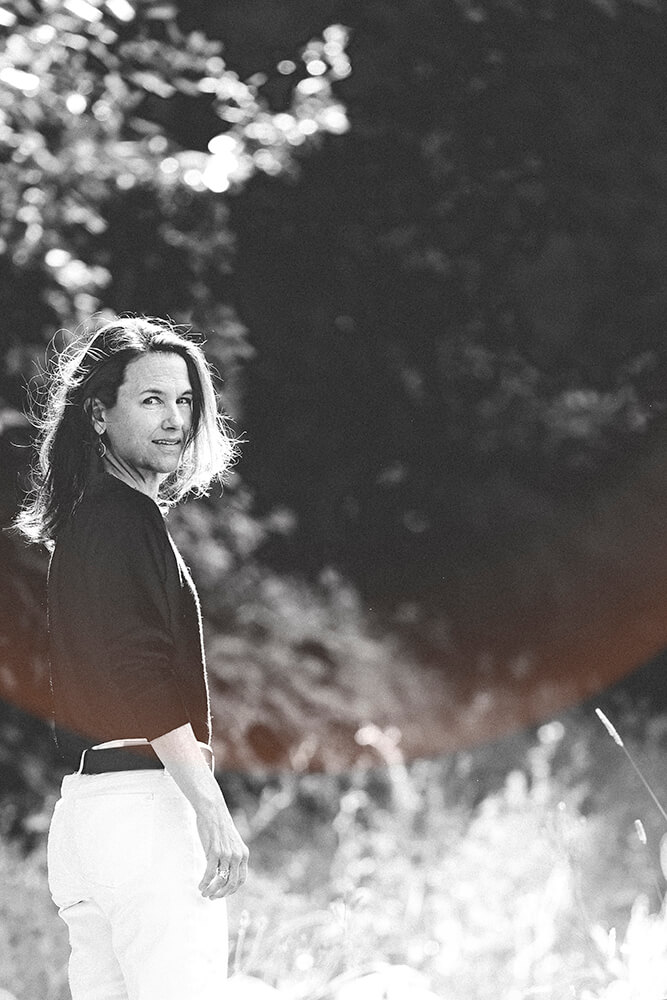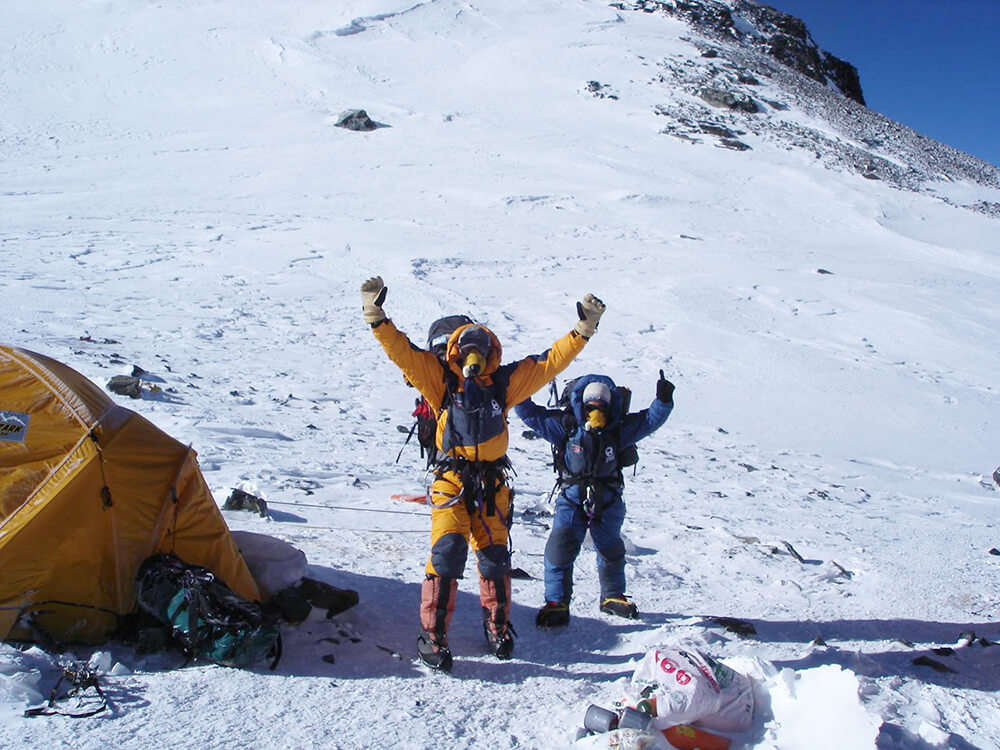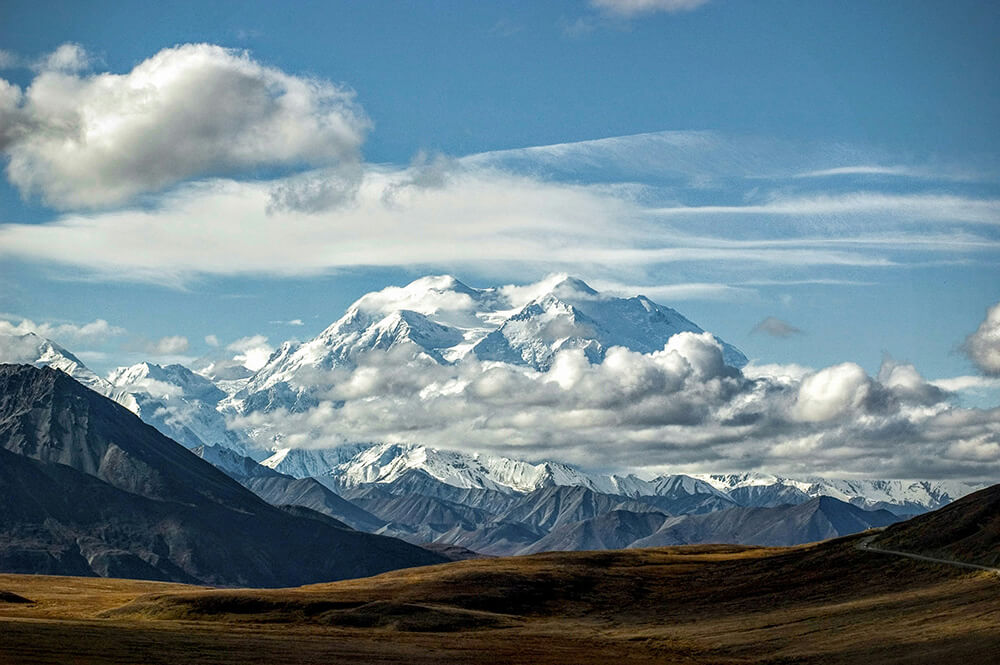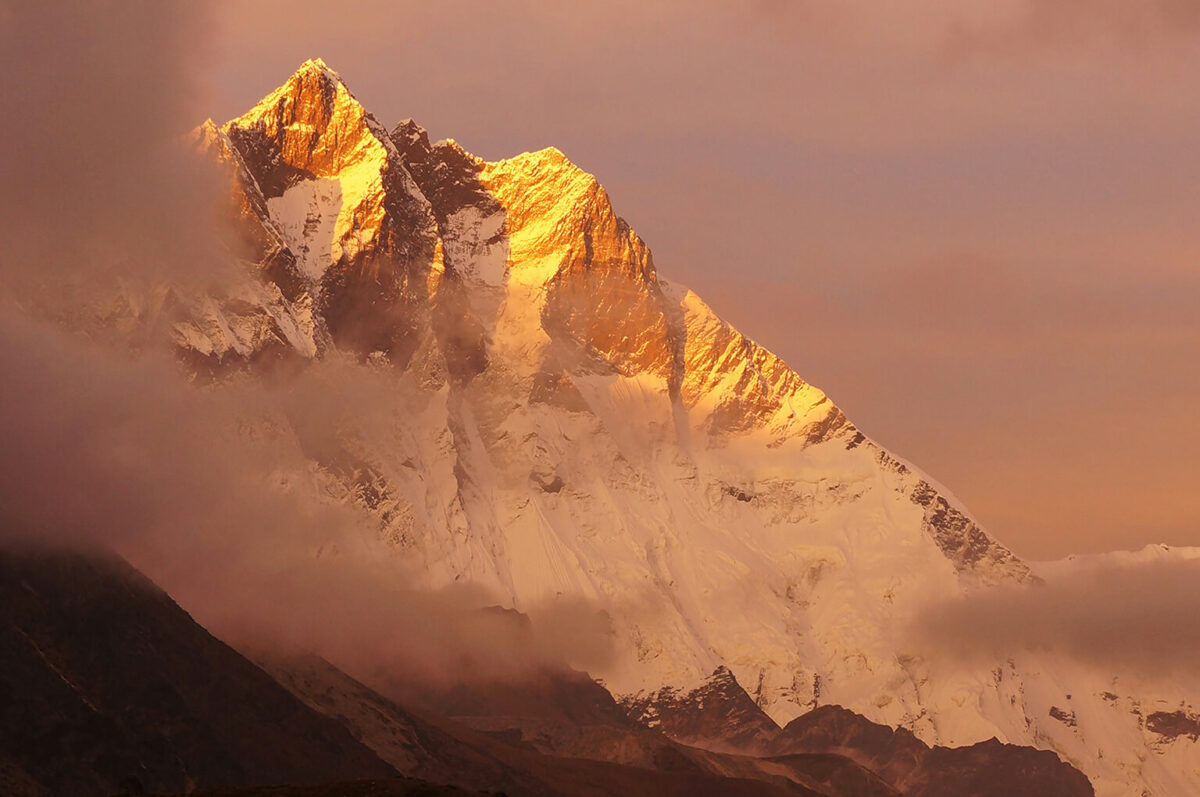Words by Kate Daly
How does Heidi Richards of Portola Valley describe some of her experiences as a professional mountain guide who has reached the summit of the seven highest mountains on all seven continents? “A suffer-fest.”
Fortunately, Heidi is the kind of person who enjoys challenges. “The physical demand, and the simplicity of it all, is incredible,” she explains. Heidi attributes her endurance in such a challenging field—she led climbs for more than a dozen years—to being “very clever and very resourceful” and staying in great shape.
As she approaches 60, Heidi’s no longer a guide but she exercises every day, hiking up and down Windy Hill Open Space Preserve and on trails in Palo Alto’s Foothills Nature Preserve with friends. You can find her surfing with her family in Santa Cruz and skiing in winter. Heidi says the “high of exercise” is something she thrives on. “I feel really lucky it makes me feel good,” she says.
Of course, a mountain guide’s challenges are far from just physical. “Climbing mountains is a great opportunity to develop your mind … There’s a lot of time for reflection.” Case in point: the time Heidi spent 11 days in a tent waiting out a storm at 14,000 feet on Denali, also known as Mount McKinley, in Alaska.

Photo by Annie Barnett
“You can’t get out of your tent without your skin completely covered, and those are tough times because you have to keep physically active.” If you don’t, you won’t be prepared to make it to the top at 20,310 feet, Heidi says.
It pays to expect the unexpected on Denali. On one expedition, Heidi says it took 28 days to climb, due to bad weather delaying the summit until day 26. Winds could be howling at 30 mph with wind chill making the temperature drop to 10 degrees below zero.
Guides typically carry 30 to 40 pounds of supplies—from long underwear and insulating layers for rain, snow, extreme heat and sun, to rescue gear, first aid kits, freeze-dried food and white-gas fueled stoves to melt snow. On Denali, mountain guides pull sleds to and from base camps, adding to the hardships.
Heidi says the key quality needed in an expedition leader is a “mental edge.” “Not only are you stronger than your clients, you’re a million times more efficient in everything that you do because you have so much experience,” she observes. One of her mountain-guide hacks? Heidi pre-stuffs her coat with snacks, so there’s no delay when she needs to eat and no disrobing needed to get to the food. “We don’t let ourselves get cold or too hot, but if we do, we can handle it because our tolerance is so high for physical discomfort,” she says of mountain guides.

Tap and Heidi raise their arms in triumph on the way down from the summit of Mount Everest. / Photo: Courtesy of Heidi Richards.
Heidi grew up in Tacoma, Washington, on a ranchette where hard physical work came with the territory. After high school she went to massage school and in 1994, when she was in her 20s, she switched to mountain guiding for Rainier Mountaineering Inc. There, she met her future husband, Tap Richards, and over the years, they often worked together. Heidi started guiding international trips in 1997.
In 2001, an American client hired a team that included Heidi and Tap with the goal of climbing the seven summits in five years. “He was a tough guy, mentally very tough; we had to climb year-round to keep his goal and stay in shape,” Heidi says. He made it to the top on six of the climbs, but on his last try at age 53, he did not complete the seventh summit in the Himalayas. Mount Everest, the highest mountain in the world at 29,032 feet, “just proved to be too much,” she says.
Heidi estimates the whole trip— including helicopters, Sherpas and yaks—cost about $400,000. Heidi recalls the group spent two and a half months on that expedition in 2006, starting with a two-week-long walk to Everest’s south-side base camp at 17,500 feet. The team worked its way up to Camp III and Camp IV, before attempting to summit via the South Col route.

Heidi and husband Tap celebrate back at base camp after reaching the summit of Mount Everest in 2006. / Photo: Courtesy of Heidi Richards.
The client made it as far as Camp III before having to turn around. Heidi, her husband Tap and two others made it all the way to the top. The couple spent about 15 minutes up there, took photos and used a satellite phone to share the news with their dads before making the difficult descent. A photo taken of the group at base camp the day after they summited captures “one of the happiest days of my life,” Heidi says. She was 39 and ran into a friend along the route who told her that after this Everest trip, she was going to start a family. Me too, Heidi replied.
In 2008, she and Tap welcomed their daughter on the same day that mountaineering legend Sir Edmund Hillary died. Back in 1953, the New Zealander and Sherpa Tenzing Norgay became the first confirmed climbers to reach the summit of Everest. Heidi and Tap considered the date to be a good omen.
Almost a decade earlier, the couple had a brush with another famous mountaineer on Everest. In 1999, they were involved in a research expedition to locate the body of English climber George Mallory. He and Sandy Irvine died on the mountain in 1924 while attempting to summit the north side, and it is still unknown whether the pair of Brits ever succeeded in making it to the top. The team found a frozen body and Tap spied the nametag on its shirt: G. Mallory. The group performed a burial ceremony on the spot and recovered some artifacts.

Since summiting Everest, Heidi has climbed Mount Rainier several more times, adding to her total of guiding more than 100 trips there. After leaving the professional mountain guide life behind, Heidi was a real estate agent in Seattle until the couple moved to the Peninsula 10 years ago. Currently, Heidi is a personal assistant for a local family and offers massage therapy for a small group of clients.
After all that time in the Pacific Northwest, Heidi and Tap are enjoying the Bay Area’s fair weather and love that so many of their friends and neighbors are outdoorsy and game to go camping. Their daughter is a rising high school senior who has done some climbing in Yosemite. “She does seem interested, and is a very strong athlete,” Heidi says. But it’s a bit too soon to tell if she will follow in her parents’ adventure-filled footsteps.


